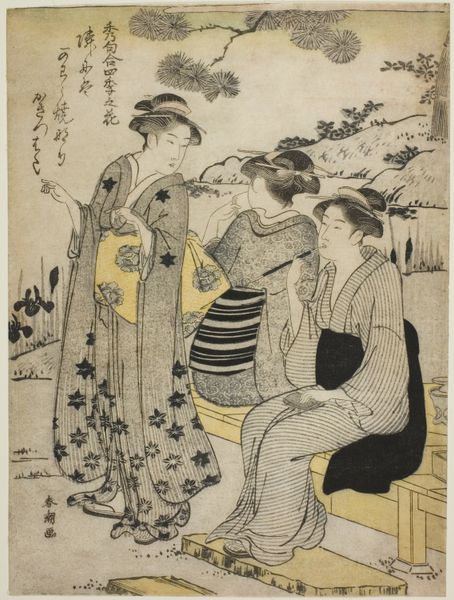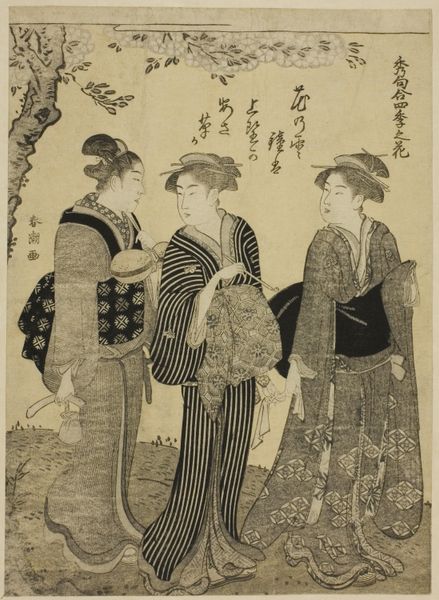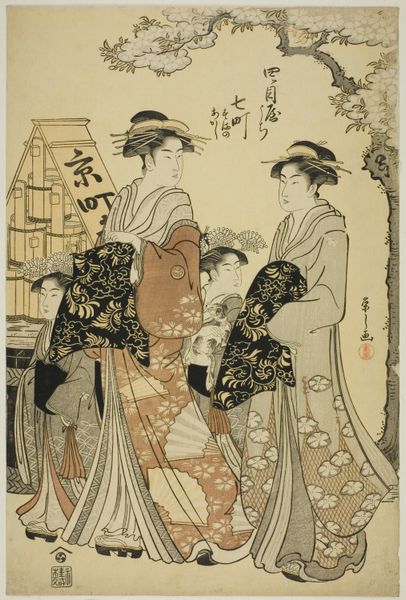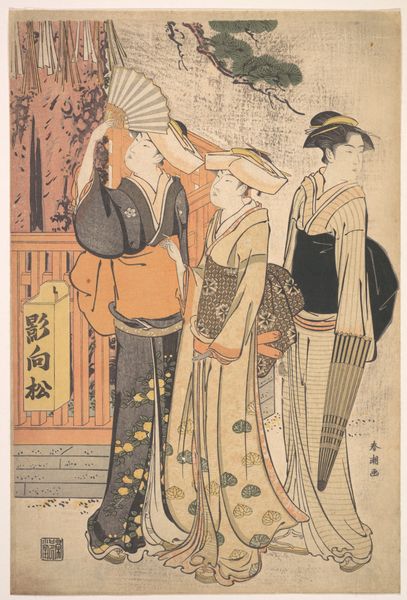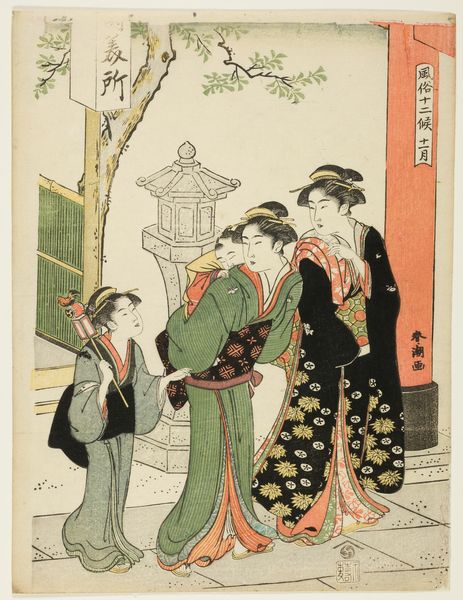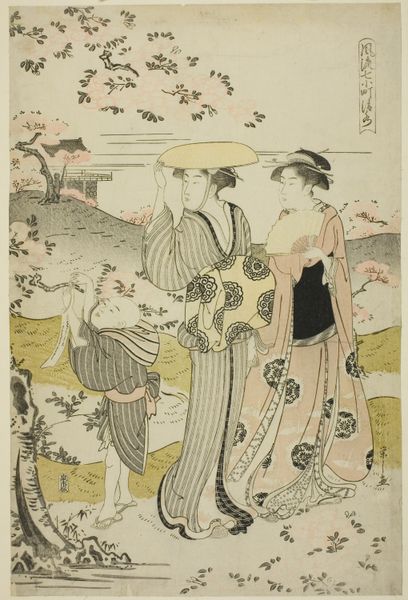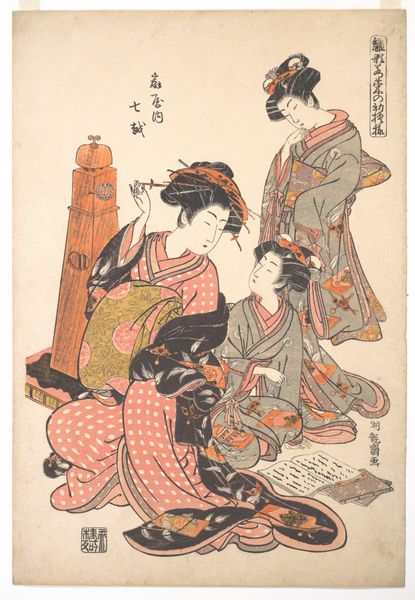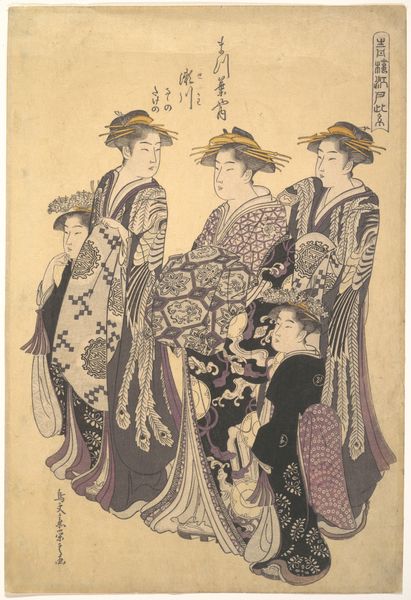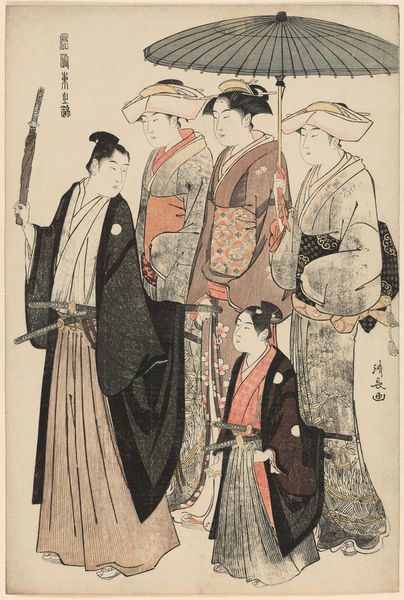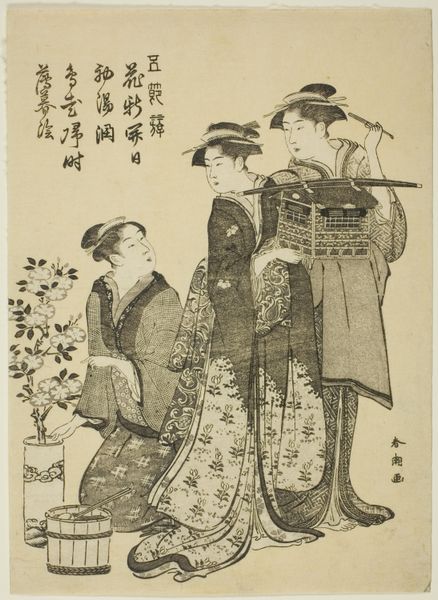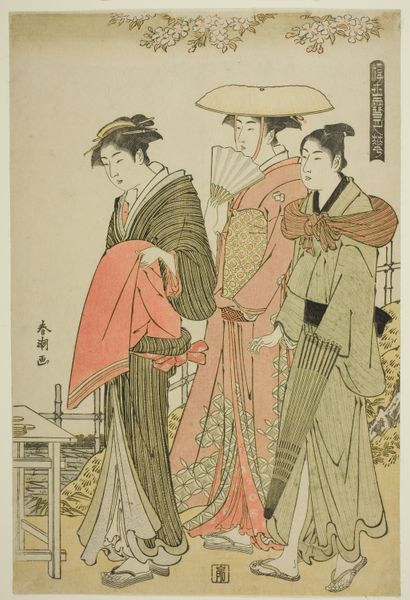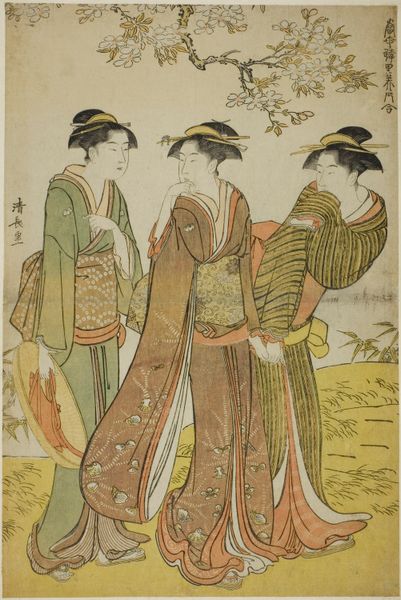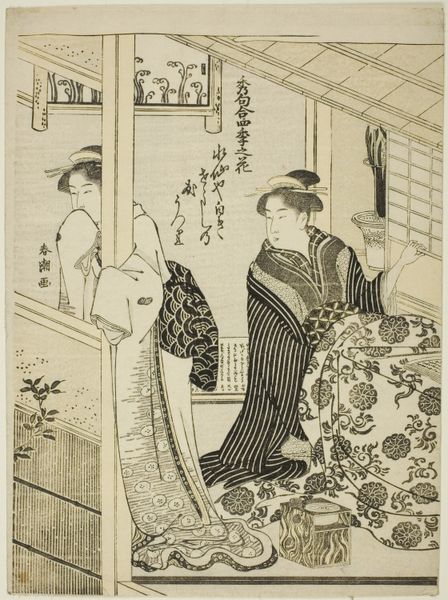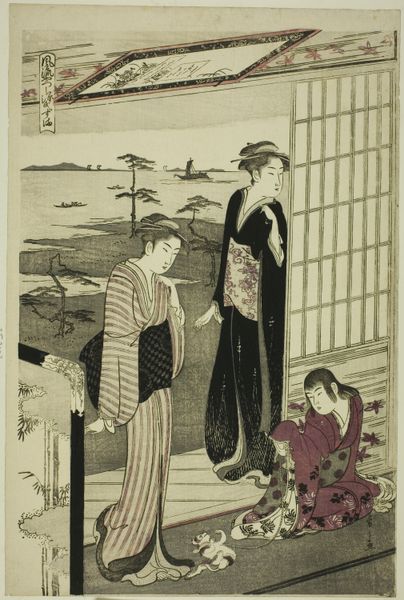
The Tanabata Festival, from the series "Amusements of the Five Festival Days (Gosetsu asobi)" c. 1790
0:00
0:00
print, woodblock-print
# print
#
asian-art
#
ukiyo-e
#
figuration
#
woodblock-print
#
genre-painting
Dimensions: 26.4 × 19.4 cm (10 3/8 × 7 5/8 in.)
Copyright: Public Domain
Curator: This woodblock print, created around 1790 by Katsukawa Shuncho, captures "The Tanabata Festival" and comes from a series called "Amusements of the Five Festival Days". What are your first thoughts? Editor: The composition immediately strikes me – the contrast between the dense patterns of the kimonos and the relative emptiness of the sky. The way the artist balances the figures with the textual elements is really visually interesting. Curator: Yes, and I find the depiction of this festival so revealing about the urban culture of the Edo period. The materials themselves – the woodblock and ink – speak to a specific mode of production and consumption of art at the time, far removed from elite painting circles. These prints were commodities, traded and circulated widely. Editor: The formal choices definitely support that reading. Consider the flattened perspective and the emphasis on line – typical of Ukiyo-e. It almost anticipates graphic design. And note the symbolic details: fans and clothing all help establish social hierarchies through intricate design. Curator: Exactly! The festival itself involved complex labor practices, from agriculture that informed it's initial dates, to its production of decorations that one can only presume these figures had a hand in. Even leisure involved participation in the wider economy. The print provides this vital snapshot. Editor: The use of text integrated into the scene directs our eyes too, it invites textual analysis of the narrative context with semiotic understanding of the artwork's composition. It points back into visual elements. Curator: A vital interdisciplinary interpretation of the context of the labor implied can certainly add to an understanding of how cultural elements have been translated into physical and textual signs here. It makes the festival’s presence even stronger. Editor: Agreed. Studying the artwork from the lens of formality unveils narrative components like clothing and accessories, elevating both the reading and understanding. The dialogue highlights some cultural intricacies behind Japanese print production. Curator: Examining "The Tanabata Festival" highlights the blending of everyday life and artistry through mass reproduction techniques, capturing social structure from above the common citizen.
Comments
No comments
Be the first to comment and join the conversation on the ultimate creative platform.
